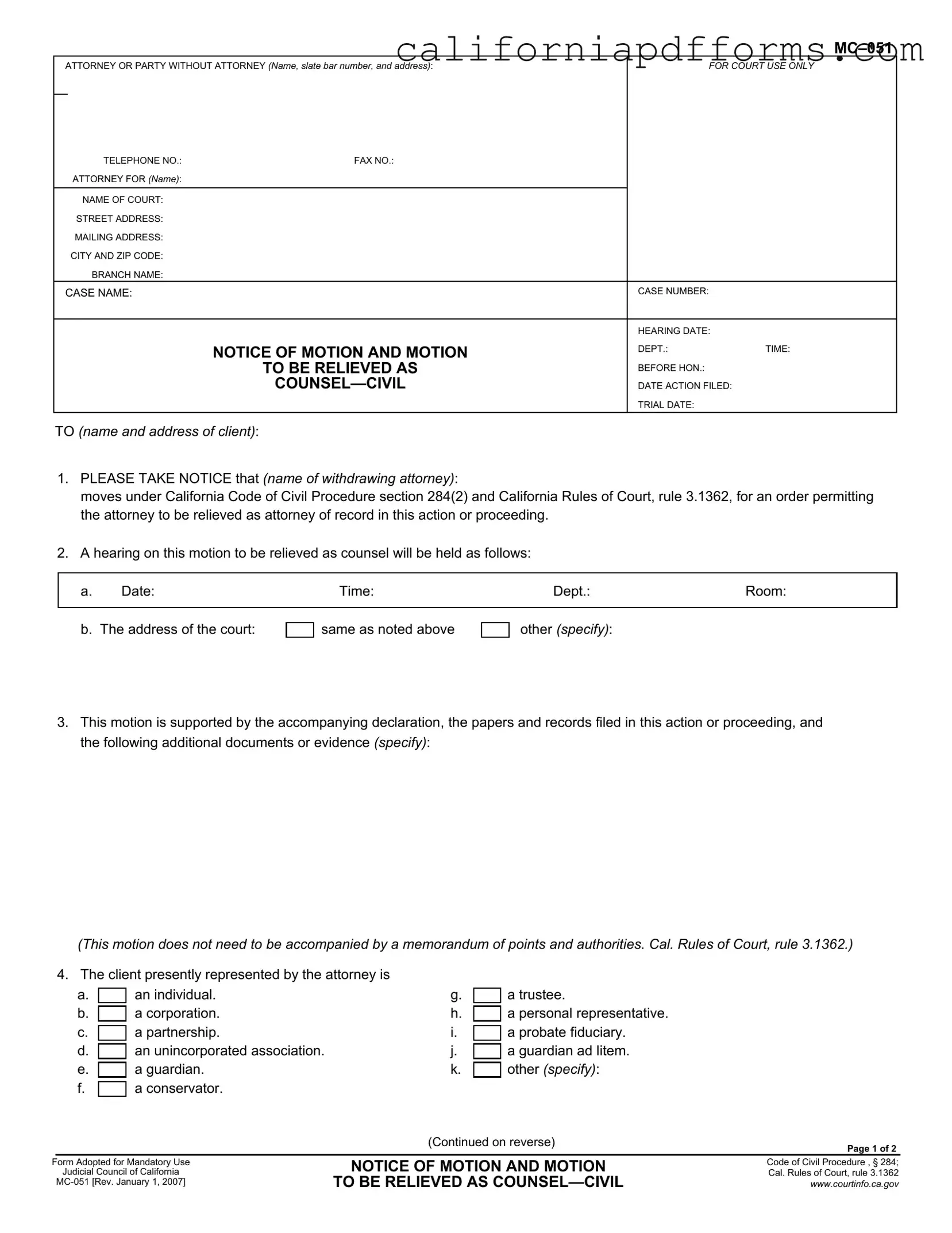The California Motion form MC-051 is used by an attorney who wishes to withdraw from representing a client in a civil case. This form allows the attorney to formally request permission from the court to be relieved as the attorney of record.
This form is intended for attorneys who are withdrawing from a case. It is also relevant for clients who may need to understand the implications of their attorney's withdrawal. Various parties, such as individuals, corporations, partnerships, and guardians, may be involved in the case.
The form requires several key pieces of information, including:
-
The name and address of the attorney or party without an attorney.
-
The name of the court and its address.
-
The case name and number.
-
The hearing date and time.
-
Details about the client being represented.
What happens if the motion is granted?
If the motion to be relieved as counsel is granted, the attorney will no longer represent the client. The client must then decide whether to seek new legal representation or to represent themselves, which comes with its own responsibilities.
What should clients know about representing themselves?
Clients who choose to represent themselves must be aware of court rules and applicable laws. If they fail to comply, they risk negative consequences, such as losing their case or having pleadings struck. It is crucial for clients, especially those in specific roles like guardians or conservators, to seek legal advice if they are unsure about self-representation.
What are the consequences of not keeping the court updated?
If a client does not keep the court informed of their current address and contact information, they may miss important notices. This could lead to actions that adversely affect their case, including default judgments or other unfavorable outcomes.
Is a memorandum of points and authorities required with this motion?
No, a memorandum of points and authorities is not required when filing this motion. The motion is supported by the accompanying declaration and any relevant documents filed in the case.
What is the significance of the hearing date?
The hearing date is when the court will consider the motion to relieve the attorney. It is essential for both the attorney and the client to be aware of this date, as attendance may be required to present their case or concerns.
How can clients prepare for the hearing?
Clients should review the motion and any related documents beforehand. It is advisable to consider legal representation if they have not secured a new attorney. Preparing questions and understanding the implications of the motion will help clients navigate the hearing effectively.
